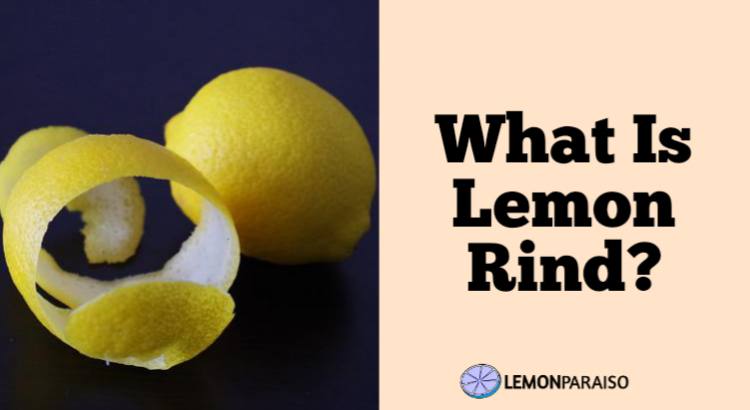What Is Lemon Rind?

Lemon rind is a versatile ingredient that can add a burst of citrus flavor to a wide range of dishes and drinks. While it is often used in cooking and baking, many people are unaware of its nutritional benefits and alternative uses.
What Is Lemon Rind?
Lemon rind refers to the outer layer or skin of a lemon. It is the yellow-colored part of the fruit that covers the pulp and contains the essential oils that give lemons their distinct aroma and flavor.
The rind is often removed before the lemon is juiced, but it can also be used in cooking, baking, and other applications to add a burst of citrusy flavor.
Can You Eat Lemon Rind?
Technically, lemon rind is edible, but it is not usually consumed as is because of its bitter taste and tough texture. The rind can be used as a flavoring agent in dishes, but it is usually grated or chopped finely before being added to a recipe.
Additionally, it is important to note that the rind of conventionally grown lemons may contain pesticides or other harmful chemicals, so it is best to opt for organic lemons if you plan to consume the rind.
Is Lemon Rind Safe To Consume?
Lemon rind is generally safe to eat, but it is important to exercise caution if consuming the rind directly. Pesticides and other chemicals used in conventional farming practices can contaminate the rind, so it is best to opt for organic lemons or wash the rind thoroughly before use. Additionally, those with citrus allergies or sensitivities should avoid consuming lemon rind.
What Is The Difference Between Lemon Rind And Lemon Zest?
While the terms lemon rind and lemon zest are often used interchangeably, there is a slight difference between the two.
Lemon rind refers to the entire outer layer or skin of the fruit, while lemon zest specifically refers to the thin, topmost layer of the rind that is rich in essential oils and has the most flavor. Zesting involves removing this top layer of the rind using a zester or fine grater.
How Can You Zest A Lemon Rind?
To zest a lemon, you will need a zester or a fine grater. Hold the lemon firmly in one hand and use the zester or grater to scrape the top layer of the rind. Be sure to only remove the yellow part of the rind and avoid the white pith, which can be bitter.
After extracting the required amount of zest, either use it immediately or keep it in a sealed container in the refrigerator.
How Much Lemon Rind Should Be Used In A Recipe?
The amount of lemon rind needed for a recipe will depend on the specific dish and personal taste preferences. As a general rule of thumb, one medium-sized lemon will yield about 1 tablespoon of zest.
When using lemon rind in cooking or baking, start with a small amount and adjust as necessary to achieve the desired level of flavor.
What Are The Nutritional Benefits Of Lemon Rind?
Lemon rind contains a variety of nutrients, including vitamin C, fiber, and antioxidants. The rind also contains compounds that may have anti-inflammatory and anti-cancer properties.
However, because lemon rind is not typically consumed in large amounts, its nutritional benefits may be somewhat limited.
How Is Lemon Rind Used In Cooking?
Lemon rind can be used in a variety of ways in cooking to add a bright, citrusy flavor to dishes. It can be used to flavor sauces, marinades, dressings, and baked goods, or used as a garnish for cocktails or other beverages. Lemon rind can also be candied or used to infuse oils or vinegars.
Can Lemon Rind Be Used In Baking Recipes?
Yes, lemon rind can be used in baking recipes to add a burst of citrus flavor. It can be added to cakes, cookies, muffins, and other baked goods to add a tangy, refreshing note.
When using lemon rind in baking, it is best to grate or finely chop the rind to ensure even distribution throughout the batter or dough.
How Can Lemon Rind Be Used In Savory Dishes?
Lemon rind can be used to add brightness and depth of flavor to savory dishes as well. It can be used to flavor roasted vegetables, chicken, fish, and pasta dishes, or used as a garnish for soups or salads.
Lemon rind can also be used to make a simple gremolata, which is a mixture of finely chopped lemon zest, garlic, and parsley, traditionally served with osso buco.
How Can Lemon Rind Be Used To Add Flavor To Cocktails?
Lemon rind is a popular garnish for cocktails and can add a burst of citrus flavor to any drink. It can be used to rim the glass, added as a twist, or muddled with other ingredients to create a refreshing cocktail.
Lemon rind can also be used to infuse simple syrup or other mixers to add a subtle lemon flavor to drinks.
Can Lemon Rind Be Used In Marinades Or Rubs For Meat Or Fish?
Yes, lemon rind can be used in marinades or rubs for meat or fish to add a bright, citrusy flavor. It pairs well with herbs such as thyme, rosemary, and oregano, and can be combined with garlic, olive oil, and other seasonings to create a flavorful marinade or rub.
Can Lemon Rind Be Used In Homemade Cleaning Products?
Lemon rind can be used in homemade cleaning products as a natural and effective alternative to harsh chemical cleaners. The acid in lemon juice can help dissolve dirt and grime, while the essential oils in the rind can help freshen and deodorize surfaces.
Lemon rind can be used to make an all-purpose cleaner or combined with vinegar to make a natural disinfectant.
What Are Some Alternative Uses For Lemon Rind?
In addition to culinary applications, lemon rind can be used in a variety of other ways. It can be used to make a natural air freshener, infused into a homemade skincare product, or used as a scrub for hands and feet.
Lemon rind can also be used as a natural insect repellent or combined with baking soda to clean and deodorize carpets and upholstery.
How Long Does Lemon Rind Last In The Refrigerator?
Lemon rind can be stored in the refrigerator for up to one week if stored in an airtight container or wrapped in plastic wrap. To extend its shelf life, lemon rind can be frozen for up to six months.
Can Lemon Rind Be Frozen For Later Use?
Yes, lemon rind can be frozen for later use. To freeze, grate or chop the rind and store it in an airtight container or freezer bag. Frozen lemon rind can be used directly from the freezer in cooking and baking recipes.
How Do You Candy Lemon Rind?
To candy lemon rind, start by removing the yellow part of the rind using a zester or fine grater. Blanch the rind in boiling water for a few minutes to remove any bitterness, then drain and rinse in cold water.
In a separate pot, combine equal parts sugar and water and bring to a simmer. Add the lemon rind and simmer for about 30 minutes, or until the rind is translucent and the syrup has thickened. Remove the rind from the syrup and allow it to cool before using it to garnish desserts or as a sweet snack.





